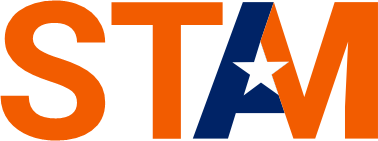In the ever-evolving landscape of business, especially in the wake of unprecedented events like the COVID-19 pandemic, securing financial stability is crucial. One lifeline that emerged during these challenging times is the Paycheck Protection Program (PPP) loan. In this comprehensive guide, we will delve into the intricacies of PPP loans, exploring their benefits, eligibility criteria, application process, and how they can be a game-changer for businesses.
Section 1: Understanding PPP Loans
1.1 What is a PPP Loan?
The PPP loan is a government-backed initiative designed to provide financial assistance to small businesses affected by economic disruptions, such as the COVID-19 pandemic. Administered by the Small Business Administration (SBA), the program aims to help businesses retain employees, cover operational costs, and navigate the challenges posed by unprecedented economic downturns.
1.2 Key Features and Benefits
- Forgivable Nature: One of the most appealing aspects of PPP loans is their forgivable nature. If the funds are used for eligible expenses like payroll, rent, and utilities, the loan can be fully forgiven.
- Low-Interest Rates: For any portion of the loan that is not forgiven, the interest rate is notably low, making it an attractive financial option for businesses.
Section 2: Eligibility Criteria
2.1 Who Qualifies for a PPP Loan?
- Small Businesses: Generally, small businesses with 500 employees or fewer are eligible for PPP loans. This includes sole proprietors, independent contractors, and self-employed individuals.
- Nonprofits and Veterans Organizations: These entities are also eligible, expanding the reach of the program beyond traditional businesses.
- Special Considerations: Certain industries, like accommodation and food services, have specific eligibility criteria, allowing for broader access.
Section 3: Application Process
3.1 Steps to Apply for a PPP Loan
- Contact a Participating Lender: Businesses can apply through any existing SBA 7(a) lender or through any federally insured depository institution, federally insured credit union, or Farm Credit System institution participating in the PPP.
- Gather Required Documents: Applicants will need to provide documents such as payroll records, tax forms, and proof of business operations.
- Complete the Application Form: The SBA provides a standard application form that businesses must complete and submit to their chosen lender.
Section 4: Tips for a Successful PPP Loan Application
4.1 Ensuring a Smooth Application Process
- Accurate Documentation: Thoroughly review and organize all required documents to ensure accuracy and completeness.
- Timely Submission: Given the popularity of the program, submitting the application promptly is crucial to securing funds before they are exhausted.
Section 5: Navigating Loan Forgiveness
5.1 Maximizing Loan Forgiveness
- Use Funds for Eligible Expenses: To qualify for loan forgiveness, businesses must allocate funds appropriately, with at least 60% going towards payroll expenses.
- Maintain Employee Headcount: Keeping employee headcount stable is essential. Reductions in staff may result in a reduction in the forgivable amount.
Conclusion:
In conclusion, PPP loans have emerged as a vital lifeline for businesses navigating the economic challenges of recent times. Understanding the intricacies of PPP loans, from eligibility criteria to the forgiveness process, is crucial for businesses seeking financial support. By leveraging this comprehensive guide, businesses can not only survive but thrive in the face of uncertainty, securing the financial assistance they need to weather the storm. Remember, knowledge is power, and with the right information, businesses can make informed decisions that pave the way for a brighter, more resilient future.
